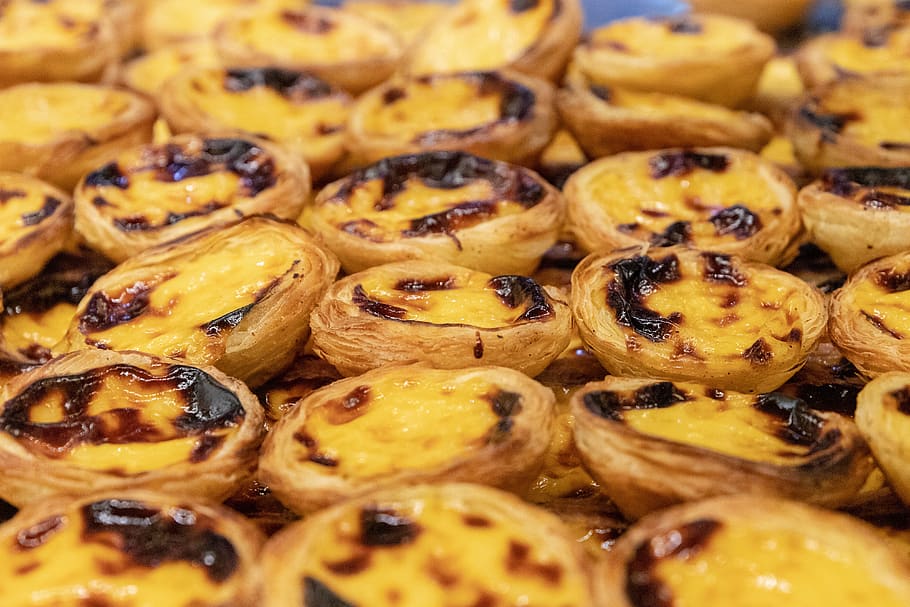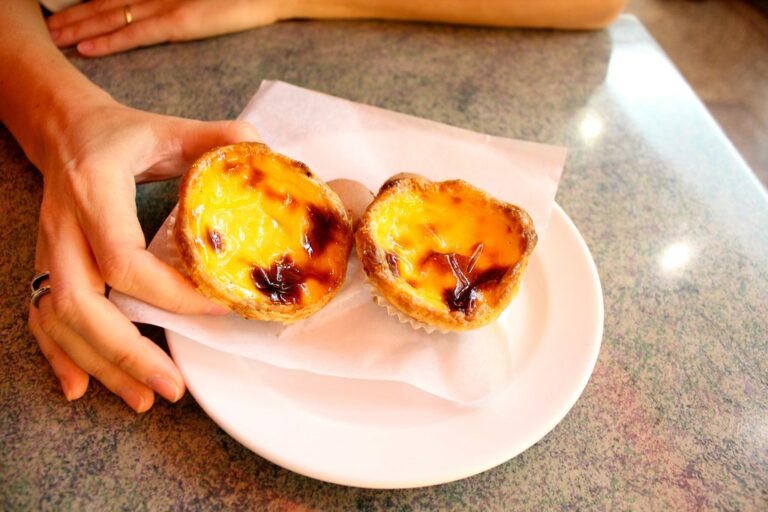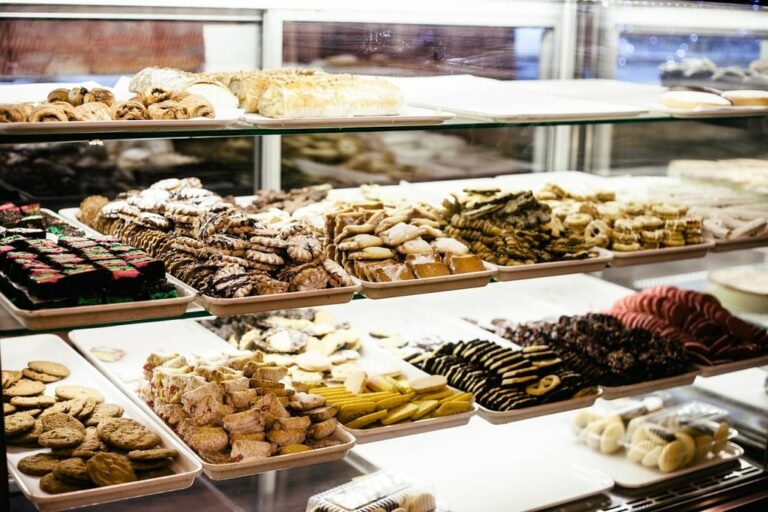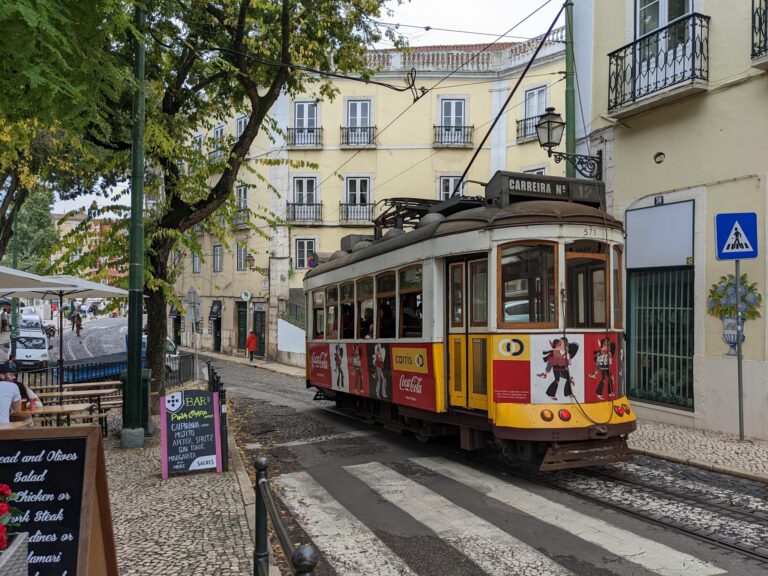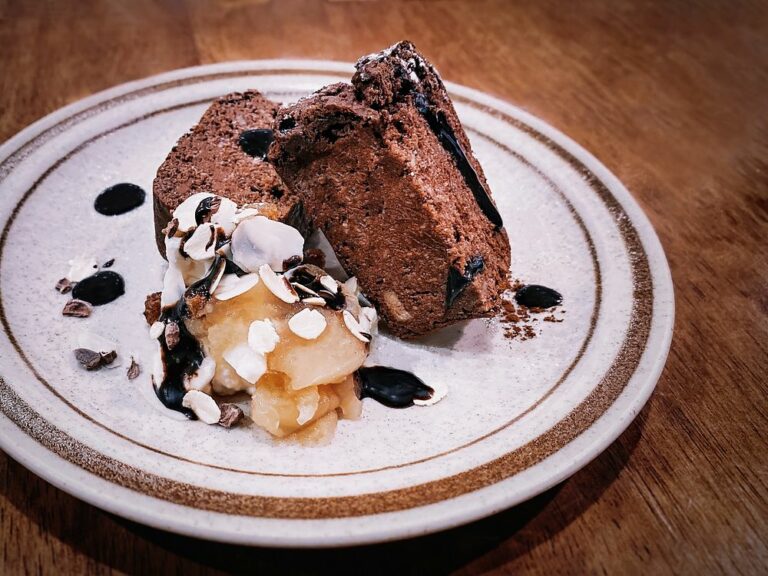In the heart of the Portuguese capital, a culinary gem has captured the hearts and taste buds of locals and tourists alike – the Pastel de Nata Lisbon or egg tart.
These delectable custard tarts have become synonymous with the vibrant culture of the Portuguese capital. Here, I embark on a journey to uncover the essence of Pastel de Nata.
Together, we will explore its origins, where you can savor it in Lisbon, and even provide a recipe for those eager to recreate this heavenly treat at home.
Pastel de Nata Lisbon – A Culinary Icon
Undertake a culinary journey in Lisbon, where the iconic Pastel de Nata stands as a testament to Portuguese pastry mastery. In this vibrant city, the Portuguese custard tart isn’t just a treat; it’s a culinary icon that encapsulates the essence of Lisbon’s rich gastronomic heritage.
The Easy Lisbon Quiz
Ready to test your Lisbon knowledge?
I’ve made an easy Lisbon quiz with 5 questions. Let’s see if you can get them right. 🤞
Pastel de Nata Lisbon: What is It?
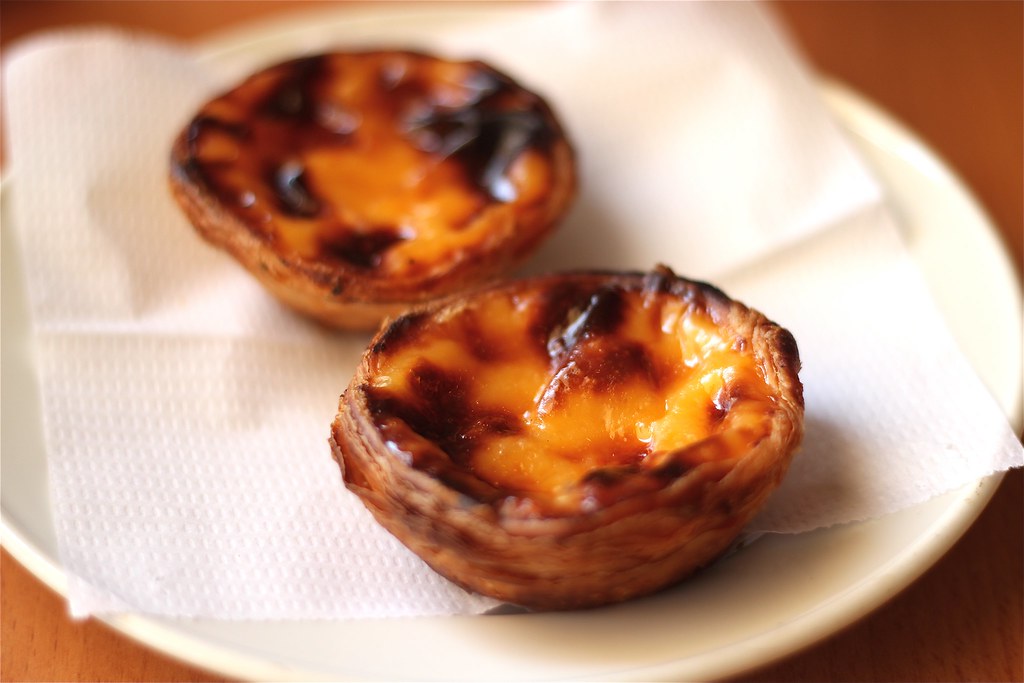
Pastel de Nata, often called the Portuguese custard tart or egg tart, is an exquisite pastry that transcends the ordinary. At its heart is a divine interplay of textures and flavors, creating a culinary masterpiece cherished across the globe.
The pastry unfolds with a mesmerizing combination of a crispy, flaky crust that cradles within it a treasure – a rich, creamy custard. The custard is the soul of the Pasteis de Nata, delivering a sensory experience unlike any other.
The magic happens when the shatteringly crisp layers of the pastry meet the smooth, indulgent sweet treat, creating a symphony of textures that captivates the palate.
Delving deeper into the taste, each bite is an orchestrated dance of flavors. Subtle hints of vanilla infuse a sweet and comforting note, while cinnamon’s delicate embrace adds warmth and complexity to the powdered sugar.
It’s a harmonious blend that elevates the Pastel de Nata Lisbon tart to a gastronomic delight that transcends its humble ingredients.
Beyond its extraordinary taste, this iconic delicacy stands as a symbol of Portuguese pastry chefs. Its roots trace back to the vibrant streets of Lisbon, where it has become an integral part of the city’s culinary identity.
Planning On Going To Lisbon?
I’ve created a trip planner where you enter the number of days you’re going and what activities you want to do.
Based on your input, you then get an entire vacation planned with ideas.

Where You Can Buy The Pastel de Nata Lisbon Famous Pastry
Lisbon offers a plethora of venues where one can indulge in the sublime experience of savoring an authentic Pastel de Nata. A few stand out among the myriad bakeries and cafes that dot the city for their unwavering commitment to delivering the perfect egg tart.
Pastéis De Belém: Original Recipe

Nestled in the historic Belem district, Pastéis De Belém is renowned as the birthplace of Pastel de Nata Lisbon Portuguese egg custard tarts.
Established in 1837, this iconic bakery has been churning out these divine pastries using a secret recipe guarded for centuries.
The queues around the building are a testament to the irresistible allure of their Pastéis De Nata.
Here are the best things to do in Lisbon In July 2024
I’ll send you a list of the best things to do in July and every month moving forward from today.
It’ll be based on my personal experience of living and traveling around Lisbon. A lot of hidden gems.
Manteigaria: My Personal Preference
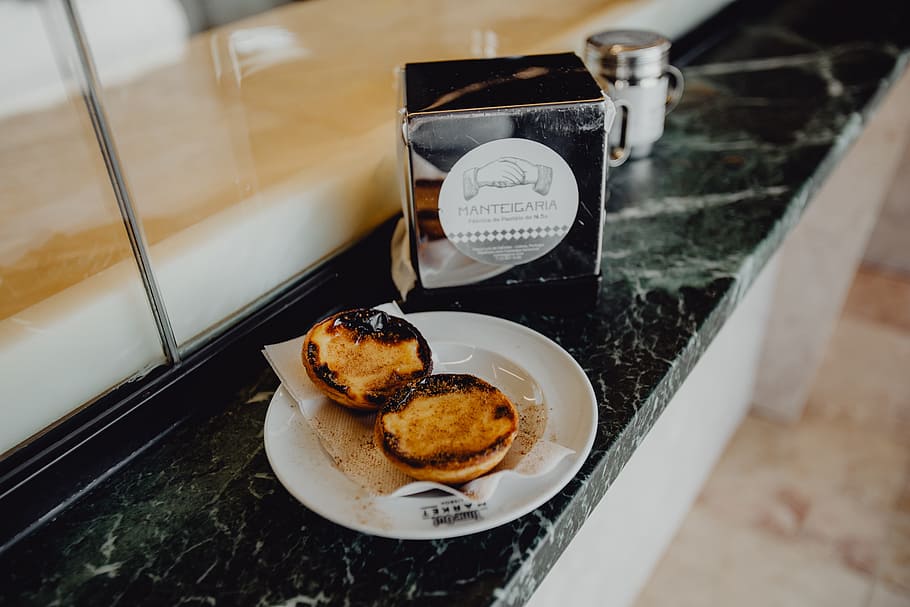
Tucked away in the trendy neighborhood of Chiado, Manteigaria is a modern haven for Pastéis De Nata enthusiasts. Here, the tarts are baked on-site, ensuring a warm and fresh experience with every order. The aroma of buttery crusts wafting through the air is enough to entice anyone passing by.
Confeitaria Nacional: Oldest Pastéis De Nata Pastry Shops

With a history dating back to 1829, Confeitaria Nacional is one of Lisbon’s oldest and most revered pastry shops. Here, the Pastel de Nata Lisbon tasty tarts are crafted with a perfect blend of tradition and innovation, making it a must-visit for those seeking an authentic yet contemporary culinary experience.
Hot Tip🔥: Why not start your day at one of the coffee cafes in Lisbon paired with a Portuguese egg tart?
The History Behind the Temptation:
Pastéis De Nata is not just a delightful pastry; it carries within its layers a rich history that unfolds in the halls of the Jeronimos Monastery in Belem, Portugal.
The journey of this culinary temptation dates back to the early 18th century when inventive monks began crafting what would become an iconic treat within the monastery walls.
Within the serene confines of the Jeronimos Monastery, these monks honed their skills, perfecting a recipe that would soon become a closely guarded secret. Their creation, the Pastel de Nata Lisbon tart, was a divine combination of crispy pastry with a creamy filling of luscious custard, a testament to their culinary ingenuity.
As the aroma of baking pastries wafted through the monastery, the secret of Pastel de Nata eventually found its way beyond the monastery walls. The monks entrusted their treasured recipe to a nearby sugar refinery, passing on the legacy of this heavenly delight.
The story takes a captivating turn with the opening of Pasteis de Belem to the public. Established in the heart of Belem in 1837, this iconic bakery became the birthplace of Pastel de Nata.
Here, the closely guarded recipe continued to be meticulously followed, preserving the authenticity and excellence that had made the pastry legendary.
Word of the delectable Pastel de Nata spread rapidly, captivating the taste buds of locals and visitors alike. The popularity of this divine pastry became a culinary wildfire, extending far beyond the walls of the monastery and the confines of Belem.
It became a staple in Portuguese cuisine, a symbol of culinary artistry that transcended generations.
Pastel de Nata Recipe: Creating the beauty at home
For those who want to recreate the magic of Pastéis De Nata in their kitchen, here’s a simple yet authentic recipe:
Ingredients:
- One sheet of puff pastry
- 2 cups whole milk
- Six egg yolks
- 1 cup granulated sugar
- Two tablespoons of all-purpose flour
- One cinnamon stick
- One teaspoon of vanilla extract
Instructions:
- Preheat your oven to 220°C (425°F).
- Roll out the puff pastry and line tart molds, ensuring an even bottom layer and sides.
- Heat the milk and cinnamon stick in a saucepan until it’s about to boil. Remove the cinnamon stick.
- Whisk together the egg yolks, sugar, and flour in a separate bowl until smooth.
- Slowly pour the hot milk into the egg mixture, continuously whisking to avoid curdling.
- Return the mixture to the saucepan and cook over medium heat, stirring constantly until it thickens.
- Remove from heat, add vanilla extract, and let the custard cool.
- Pour the custard into the prepared pastry shells and bake for about 15 minutes or until the tops are golden brown.
- Allow them to cool before serving, optionally dusting with powdered sugar or cinnamon for an extra touch.
Hot Tip🔥: For a vegan Napa check out this recipe to enjoy a sweet vegan pastel de nata in lisbon.
Wrap-Up: Pastel de Nata Lisbon Tasty Egg Tarts
Pastel de Nata in Lisbon is more than a pastry; it’s a journey through time, culture, and flavor. Whether you savor it in a historic bakery or recreate it in your kitchen, the magic of Pastel de Nata is bound to leave an indelible mark on your culinary adventures in Lisbon.
The Advanced Lisbon Quiz
You’re now at the advanced Lisbon quiz with more difficult questions. No one gets every question right, so don’t beat yourself up on it. Good luck.
Frequently Asked Questions
What is Pasteis de Nata?
Pastel de Nata, also known as Portuguese custard tart or egg tart, is a pastry that originated in Lisbon, Portugal. It consists of a crispy, flaky crust filled with a rich and creamy custard.
Where did Pastel de Nata originate?
Pastel de Nata originated in Lisbon, Portugal. Monks in the Jeronimos Monastery created it in the early 18th century.
What makes Pastel de Nata so unique?
What makes Pastel de Nata special is its unique combination of textures and flavors. The crispy, flaky crust complements the creamy custard filling perfectly, creating a heavenly taste sensation.
Can I make Pastel de Nata at home?
Yes, you can make Pastel de Nata at home using a simple recipe that includes puff pastry, egg yolks, sugar, milk, and flour. Many recipes are available online to help you recreate this delicious pastry at home.
